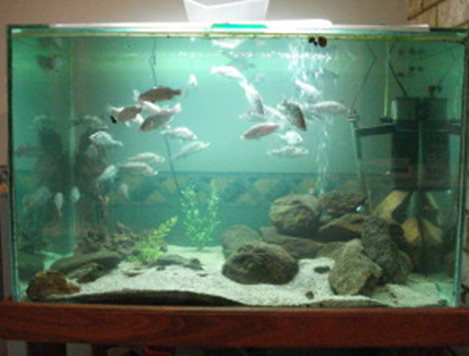Inviting your friends to a BBQ with home grown Barramundi will make an impression! Here are some ideas to ensure that barramundi is on the menu and not fast food instead.
The success of your barramundi will be due to the least stressful environment you can create. Provided your system has an established grow bed, you haven’t overstocked fish capacity, the Sun is shining and the weather is sweet. The more you feed them the larger and faster they grow (ensuring they are large enough to eat by the end of the season). But, be careful not to over feed or leave waste feed in their tank.
The barramundi growing season starts about late November and runs until late March (depending on the type of summer you are having). Barramundi also aren’t a very a fast growing fish, so you don’t have a lot of time to grow them to an edible size.
Just some quick guidelines for a successful Barra Season
Fingerlings
Buy fingerlings as large as you can get. Stay away from anything under 15cm as they will not be big enough to eat before the water gets too cold and they stop feeding.
Warm water
Barramundi really don’t like the process of being transported and introduced into new surroundings, particularly if the new surroundings are cooler than where they came from. If your barramundi stress, they will not eat – making them susceptible to illness and disease. A good way to help reduce stress is to purchase and introduce them into your system during a hot spell when your water is warm. Adding salt to your system will also buffer transport stress. Look for a few days to a weeks worth of warmer temps and that the night time temps are rising too.
Feeding and water quality
It is common for Barramundi to not feed for a week or so after the initial introduction due to the stress of being moved, if this is the case it is important to be patient and slowly tempt your fish into feeding. If your Barramundi are not feeding, then don’t feed them. Uneaten feed will eventually sink to the bottom of the tank, foul your water, and exacerbate the potential problem or issues.
Mimic nature
To tempt shy and nervous species such as Barramundi to feed, mimic as best as you can their natural feeding behaviours. Add a floating tray of polystyrene, tethered so that it doesn’t float all around the tank (while still being able to rise and fall with the water level). This is to simulate an over hanging branch, Mangrove or structure that the Barramundi love to hide under. When feeding your fish, throw the feed in front of the tray and watch the barramundi strike at the feed from under the tray. Sunset is the best time to feed. If using the POOL BLANKET METHOD, simply throw the feed in the cut out the same as the FLOATING TRAY METHOD.
Silver Perch And Barramundi In The Same Tank
Ensure you have mature Silver Perch in the fish tank. Introducing barramundi to a fish tank with silver perch creates competition for feed, and it’s a competition barramundi don’t like to lose. They will be tempted to feed just to keep out the Silver Perch. The Barramundi or the Silver Perch, whichever is bigger, will try eat each other, so be careful in your sizes and ages.
Raise small fingerlings in winter
Buy small 10cm barramundi at the beginning of the year and put them in a large heated aquarium in the house over winter. Your barramundi become trained to people and noises/differences in environmental circumstances and will feed as soon as you introduce them to your aquaponics system at the end of the year. It can be a bit of work to keep your barramundi happy and thriving however the reward is worth it.
Many Blessings on your new journey
Ras Mark SUBURBAN FARMER


